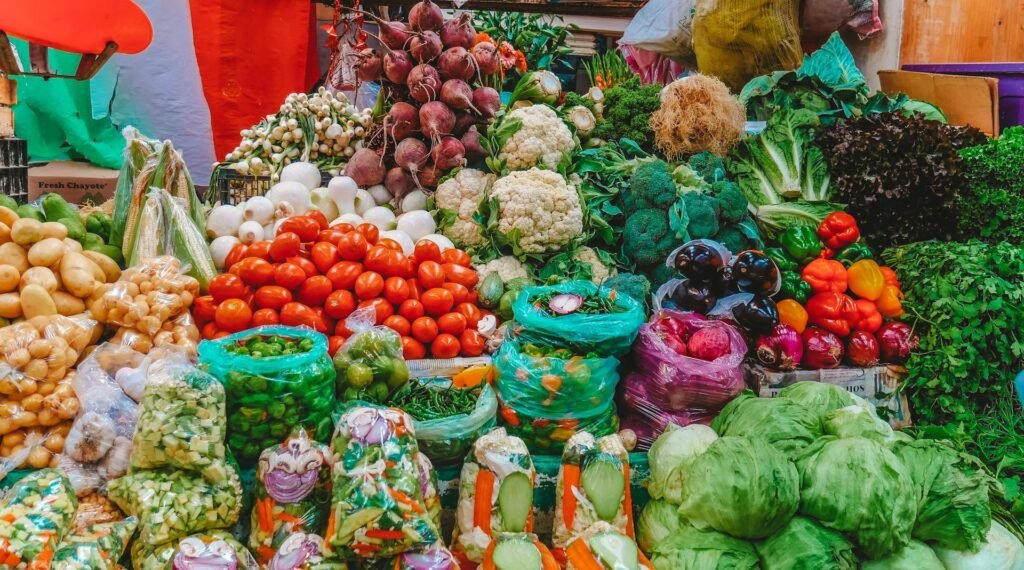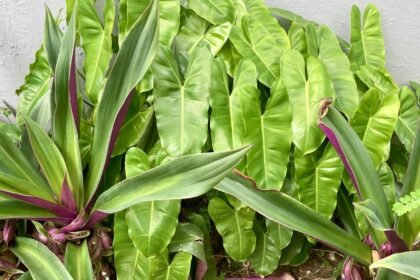Ever glanced upwards while wandering through a vibrant Mexican city and spotted a splash of green against the concrete? More than just a pretty sight, those rooftop gardens are often a testament to ingenuity, a deep connection to cultural roots, and a beautiful way of bringing life – and deliciousness – to even the most minimal of spaces.
Forget sprawling estates; I’m talking about transforming overlooked rooftops into thriving ecosystems, cultivating plants that are so much more than just food. These elevated plots are living stories, whispering tales of tradition, resourcefulness, and the enduring human desire to nurture life.
So, relax, pour yourself a refreshing agua fresca, and let’s journey up to these inspiring Mexican rooftops. We’ll explore the heart and soul behind these sky-high gardens, discover the culturally significant plants that call them home, and understand why this practice is such a vital part of the Mexican spirit.

More Than Just Greenery: The Cultural Tapestry Woven on Rooftops
Mexican rooftop gardens often hold a profound cultural significance that goes far beyond aesthetics or even sustenance. They aren’t window boxes precariously perched on a ledge. These gardens are often deeply intertwined with family traditions, ancestral knowledge, and a powerful connection to the land – even when that land is several stories up.
Imagine a grandmother tending to her prized epazote, the earthy aroma bringing back memories of countless pots of flavorful beans simmered over generations. Or a family harvesting vibrant red tomatoes, the same variety their ancestors cultivated, their taste a direct link to the past. These gardens become living libraries of culinary heritage, preserving flavors and knowledge passed down through families.
In urban environments where concrete often dominates, these rooftop sanctuaries offer a vital connection to nature. They provide a sanctuary for pollinators, a splash of color in a monochrome world, and a tangible reminder of the natural cycles of life. For those who may have limited access to green spaces, rooftop gardens become a personal Eden, a place to reconnect with the earth and find a sense of peace amidst the urban hustle.
There’s an undeniable element of resilience and resourcefulness involved. In areas where space is a premium, the ability to transform an otherwise unused rooftop into a productive garden speaks volumes about the Mexican spirit of making the most of what you have. It’s a practical solution born from necessity, blossoming into a beautiful and culturally rich tradition.

The Stars of the Show: Culturally Significant Plants Thriving Sky-High
Now, let’s talk about the real charm – the plants themselves. Mexican rooftop gardens are often home to a vibrant display of species, each carrying its own cultural weight and culinary importance. Here are just a few of the beloved plants you might find flourishing against the urban skyline:
- The Mighty Tomato (Tomate)
- From plump, juicy heirlooms, to the tangy sweetness of tomatillos, tomatoes are the backbone of countless Mexican dishes. Growing them on rooftops allows for the freshest possible salsa, the most flavorful stews, and a direct connection to a fundamental ingredient. Think of the satisfaction of plucking a perfectly ripe tomato, still warm from the sun, ready to be transformed into a vibrant sauce.
- The Fiery Heart of Mexico: Chiles
- The sheer variety of chiles grown in Mexico is astounding, and many find their place on rooftop gardens. From the mild poblano to the smoky chipotle, the fruity habanero to the earthy ancho, these peppers are essential for adding depth, heat, and complexity to Mexican cuisine. Imagine the pride in harvesting your own chilies, the aroma filling the air, ready to spice up your favorite dishes with authentic flavor.
- The Sacred Grain: Corn (Maíz)
- While cultivating sprawling fields of corn on a rooftop isn’t feasible, you might find smaller, more adaptable varieties or even the tender young shoots (milpa greens) being nurtured. Corn holds immense cultural and historical significance in Mexico, and even a small rooftop harvest can be a powerful reminder of this vital staple.
- The Humble Powerhouse: Beans (Frijoles)
- Like corn, beans are a cornerstone of the Mexican diet, providing essential protein and fiber. Bush bean varieties are particularly well-suited for container gardening, offering a rewarding harvest in a small space. Picture the comforting aroma of freshly cooked beans, grown with your own hands, ready to be transformed into delicious refried beans or hearty stews.
- Versatile and Vibrant: Squash (Calabaza)
- From the familiar zucchini to the sweet butternut, various types of squash thrive in sunny rooftop conditions. You might even find the delicate and flavorful squash blossoms (flores de calabaza) being carefully harvested for delicious quesadillas, a true delicacy.
- The Aromatic Essentials: Herbs
- Cilantro, with its bright, fresh flavor; epazote, with its unique, slightly pungent aroma essential for black beans; mint, refreshing and versatile; oregano, earthy and robust – fresh herbs are the soul of authentic Mexican cooking, and they flourish in containers on sunny rooftops, ready to elevate any dish.
- The Resilient Icon: Nopales (Prickly Pear Cactus)
- This hardy plant is not only edible but also incredibly resilient and well-adapted to drier conditions, making it a perfect candidate for rooftop gardening. The tender pads (nopalitos) and sweet fruits (tunas) are both nutritious and delicious, representing a deep connection to the Mexican landscape.
- Healing from Above: Medicinal Plants
- Beyond culinary uses, many traditional Mexican remedies rely on homegrown herbs and plants. You might find aloe vera for soothing burns, chamomile for calming teas, or other plants with recognized medicinal properties, turning the rooftop into a small, personal pharmacy.
This is just a glimpse into the incredible biodiversity you might find thriving in Mexican rooftop gardens. The specific plants cultivated often reflect regional specialties, family traditions, and the individual gardener’s needs and preferences, creating a tapestry of green against the urban backdrop.
Bringing the Mexican Rooftop Spirit to Your Space: Practical Tips for Tiny Gardens
Feeling inspired by these sky-high havens? The good news is, you don’t need a sprawling rooftop in Mexico to cultivate your own little botanical refuge. Whether you have a sunny balcony, a compact patio, or even a well-supported terrace, you can embrace the spirit of Mexican rooftop gardening in your own minimal space. Here’s how:
1. Know Your Canvas (and the Rules!):
- Sunlight is King:
- Most of the culturally significant plants we’ve discussed are sun-loving. Observe your space throughout the day to understand how much direct sunlight it receives. Aim for at least 6-8 hours for most vegetables and herbs.
- Weight Matters (Especially Up High!)
- Soil, water, and mature plants can become surprisingly heavy. If you’re considering a rooftop garden, absolutely consult with a structural engineer or building professional to ensure your roof can safely support the added weight. Safety is paramount!
- Water Wisdom
- Think about how you’ll access water. Lugging heavy watering cans up multiple flights of stairs can become tiresome. A hose connection is ideal, but even a well-organized system of smaller containers can work for smaller setups.
- Regulations and Respect
- Check with your landlord or homeowner’s association for any rules or restrictions regarding balcony or rooftop gardening. It’s always best to be informed and respectful of any guidelines.
2. Embrace the Art of Container Gardening:
- Variety is Your Ally
- Container gardening is the perfect solution for minimal spaces. Utilize pots of all shapes and sizes, raised beds (if your space allows), vertical planters, hanging baskets – even repurposed containers like clean buckets or tires can work with a little creativity and proper drainage.
- Drainage is Non-Negotiable
- This is the golden rule of container gardening. Ensure every container has adequate drainage holes to prevent waterlogged roots, which can lead to root rot and unhappy plants. Adding a layer of gravel or broken pottery at the bottom can help improve drainage, but the holes themselves are essential.
- The Right Foundation: Soil Matters
- Don’t use garden soil directly in containers; it can compact and not drain well. Invest in a good quality potting mix specifically formulated for container gardening. You can enrich it further by mixing in compost for added nutrients and water retention.
3. Start Small, Dream Big:
- Don’t Overwhelm Yourself
- Begin with a few plants that you’re particularly drawn to and that are relatively easy to grow in containers. Tomatoes, chiles, and herbs are often excellent starting points for beginners.
- The Power of Companions
- Some plants actually benefit each other when grown in close proximity. For example, basil can help deter pests from tomatoes. Research companion planting to maximize your space and promote healthy growth.
- Look Up! Vertical Solutions
- When space is truly limited, think vertically! Trellises for climbing beans or tomatoes, vertical planters for herbs and strawberries – there are numerous clever ways to maximize your growing area by utilizing vertical space.
4. Water with Intention:
- Listen to Your Plants (and the Soil)
- Don’t water on a rigid schedule. Instead, purchase a moisuture meter or stick your finger about 1-2 inches into the soil. If it feels dry, it’s time to water. If it’s still moist, hold off. Overwatering is a common mistake. It can lead to many issues, such as mold and pests.
- Water Deeply, Less Often
- When you do water, water thoroughly until you see water draining from the bottom of the pot. This encourages deep root growth, making your plants more resilient.
- Timing is Everything
- Avoid watering during the hottest part of the day, as this can lead to rapid evaporation and potentially scorched leaves. Early morning or late afternoon is generally the best time to water.
5. Nourish Your Green Friends:
- Container Plants Need Our Help
- Unlike plants in the ground, container plants rely on you to provide the necessary nutrients. A good potting mix will have some initial nutrients, but these will be depleted over time.
- Embrace Organic Options
- Consider using organic fertilizers like compost tea, worm castings, or fish emulsion. These are gentle on your plants and beneficial for the soil ecosystem.
- Follow the Recipe
- Always follow the instructions on your fertilizer packaging to avoid over-fertilizing, which can damage your plants.
6. Chase the Sun:
- Strategic Placement
- Position your containers in a spot that receives the optimal amount of sunlight for the specific plants you are growing. Remember, most of these Mexican culinary staples thrive in sunshine.
- Give Them a Spin
- Occasionally rotating your pots can help ensure that all sides of the plant receive even sunlight, promoting more balanced growth.
7. Natural Pest Patrol:
- Observation is Your First Line of Defense
- Regularly inspect your plants for any signs of pests or diseases. Catching problems early makes them much easier to manage.
- Nature’s Allies
- Explore natural pest control methods like introducing beneficial insects (ladybugs are great!), using insecticidal soap, or even hand-picking larger pests.
- Good Airflow is Key
- Ensure adequate spacing between your containers to promote good air circulation, which can help prevent fungal diseases.
8. The Joy of the Harvest:
- Know When to Pick
- Research the optimal time to harvest your specific plants for the best flavor and yield. There’s nothing quite like the taste of a perfectly ripe, homegrown tomato or a freshly picked, fragrant herb.
- Savor the Fruits (and Vegetables!) of Your Labor
- Use your fresh ingredients to create your favorite Mexican dishes, sharing the vibrant flavors and the story of your rooftop garden with family and friends.
9. Connect with the Culture:
- Seek Knowledge
- Explore resources on traditional Mexican gardening techniques and the cultural significance of the plants you’re growing. Connect with local gardening groups or online communities for tips and inspiration.
- Visit Local Markets (if possible)
- If you have access to a Latin American market, take the time to explore the fresh produce and chat with the vendors. You might discover new plants to try or glean valuable traditional gardening wisdom.
By embracing these practical tips and infusing your efforts with a touch of the Mexican spirit – blending resourcefulness, connection to tradition, and love for vibrant flavors – you can transform even the smallest of spaces into thriving rooftop gardens that nourish both body and soul. So start looking at your own space with new eyes. The spirit of Mexican rooftop gardening is waiting to bloom, wherever you are. ¡Buen provecho and happy growing!




